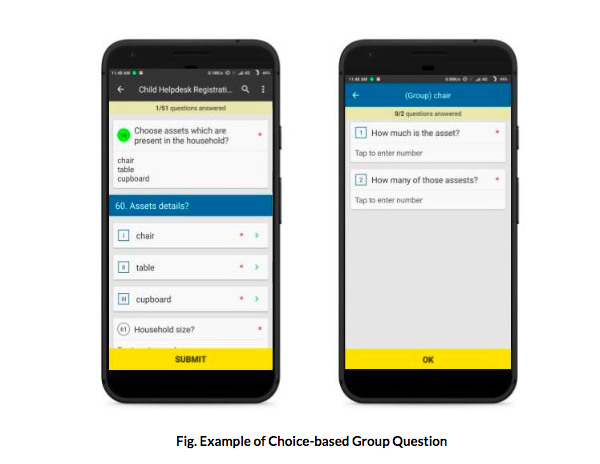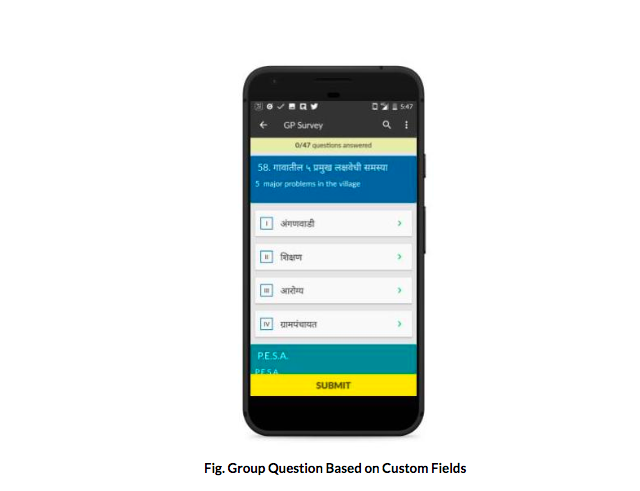Group questions help you group questions together and repeat them based on certain conditions. Here's how you can do it. Sometimes, you might want to group some questions together in a form. This can be for two reasons:
Case a. You have a table type question on paper and you want to make it on Collect
Case b. You want to ask a set of questions multiple times in every survey — based on some conditions. Ex: Asking medical details of every household member — based on the number of people in a household or asking details of harvest for each crop — based on the crops grown by a farmer chosen from a list.
In this article, we will discuss what group questions are and how you can create them.
Understanding Group Questions on Collect
Questions that form a group are known as child questions on Collect, and the questions that these groups are based on are called parent questions. You can add these child questions to a group and choose to either repeat these questions based on other questions or not.
Group questions are of four types. They can be repeated based on a number of variables, namely:
- Based on a previous numerical question
- Based on choices selected in a previous choice question
- Based on choices not selected in a previous choice question
- Based on custom fields
Based on a Previous Numerical Question
A typical example of this type of group repetition would be a household questionnaire. When a team goes on the field to visit households and interview household members, the number of household members is not known beforehand. Thus, when team members need to ask basic details of all household members (e.g. Name, Age, Gender, etc.), this group of questions needs to be repeated over the number of household members.
This is done on Collect by repeating the group of questions based on the answer to previously asked numerical question, “Number of Household Members”.

Based on Choices Selected in a Previous Question
In the same manner, a group of questions can be repeated based on choices selected in a choice question. An example of this could be a farmer survey, in which the farmer is asked to select which crops he grows from a choice question consisting of 10 crops. Let's say, out of 10, he selects 4 crops which he grows on his field.
The data collection form then demands a set of follow-up questions for each of those 4 crops — e.g. how much of this crop, season, etc. These questions can then be grouped together and repeated over each of the 4 crops based on the choices selected in previous choice question, “Which of these crops do you grow?”

Based on Choices not Selected in a Previous Question
On the other hand, the data collection form may then demand a set of follow-up questions for each of the 6 crops that were not selected by the farmer, for instance "Why do you not grow this crop?". These questions can then be grouped together and repeated over each of those 6 based on the choices not selected in previous choice questions, “Which of these crops do you grow?”

Based on Custom Conditions
Conversely, there are times when you may want to repeat a group of questions over a number of predefined fields. For example, you may need to repeat a set of questions to a child's mother and then to the child's father. For this, a group of questions can then be repeated over custom columns, “Mother” and “Father”.

